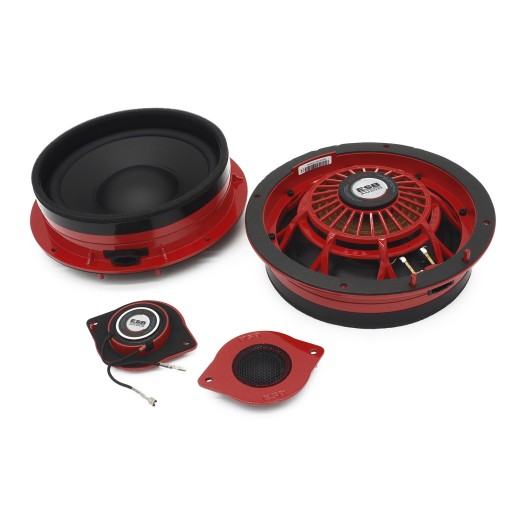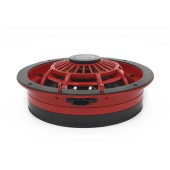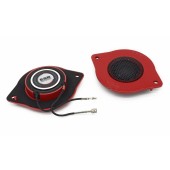ESB Audio Audi A4 Front 200 Speakers
More about the product
2-way component speakers ESB Audio Audi A4 Front 200 (year of manufacture 2008 - 2015)
The first special speakers for specific car models from ESB were made for Audi cars. The ESB team sought a solution to reconcile the specific shape and characteristics of the Audio speakers and the original amplifier with too little power to drive high-quality speakers. In these cars, it is not possible to replace the amplifier integrated in the car's electronic system, even thanks to its own MOST optical cabling and factory DSP. So it was a big challenge to develop significantly better quality speakers with the same or higher efficiency as the originals and that would match perfectly with the factory amplifier. The shape of the speakers and their mounting depth are also very specific. This is limited to only a few centimeters, so it was not possible to use classical diaphragms with traditional voice coils and a group of magnets. However, it has been possible to develop top-of-the-range ESB loudspeakers in sizes 200 and 165 mm with highly efficient and small-sized neodymium magnets and a special voice coil. The speakers have a low depth and can be adapted exactly to the car space with the help of special car adapters in the elegant Ferrari red color. Also the connectors match the factory ones for very easy installation in the spirit of plug & play. Like all ESB speakers, this set for BMW presents a high-quality sound that will satisfy even the most demanding clients. In the ESB product portfolio, these loudspeakers belong to the 6000 model series, which means they belong to the hi-end area. So you can count on very advanced sound and processing. This set is intended for the front doors of the Audi A4 manufactured in 2008 - 2015. Rear speakers are also available.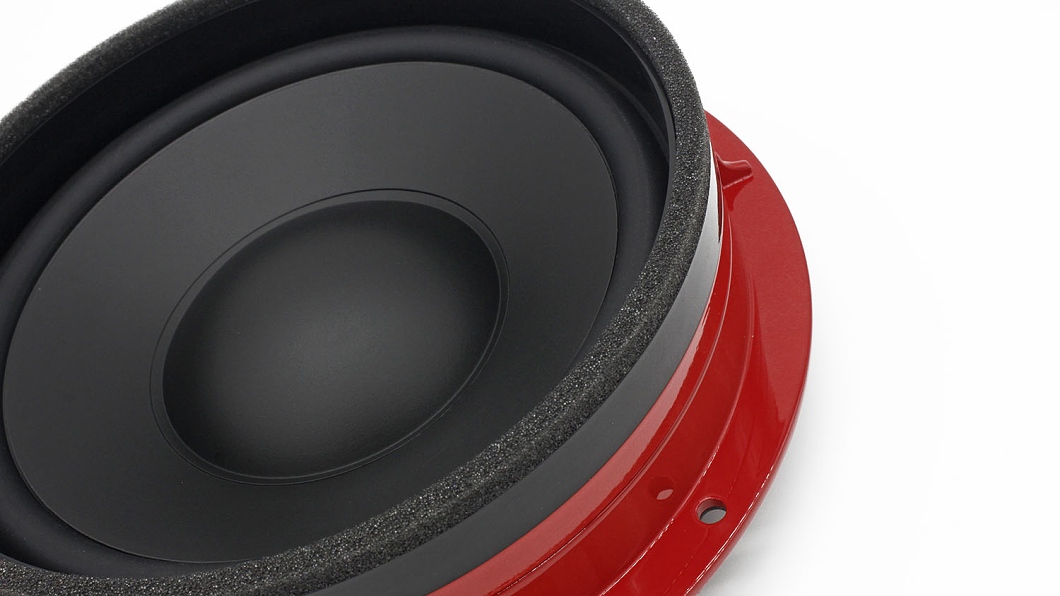
Tweeters A4-FTW1
The set includes tweeters with a diameter of 32 mm made of silk for a very soft and natural sound. The outer suspension is made of the same material, but is additionally covered with damping material to eliminate vibrations and resonances. The 32.5mm voice coil has an aluminum support and features excellent ventilation with anti-resonance chambers. High quality N-42 neodymium magnets are optimized through computer simulations to achieve better efficiency and improve linearity to provide more and better power management and increase bandwidth and efficiency. Of course, the same connector as the factory tweeter is used, and the high power of 80 W RMS is impressive.
Mid-bass speakers A4-F81
These speakers have the same shape, connector and especially the 200 mm dimension as the factory Audi speakers. However, the sound quality is completely different, and the power value of 120 W RMS is also more pronounced. The membrane is made of mineral-filled polypropylene, which excels in high mechanical rigidity, thermal stability and excellent dimensional stability in a wide temperature range. The diaphragm suspension is made of durable rubber for a long speaker life. Like the tweeter, this midrange driver uses a special and high-quality N-42 class neodymium magnet with computer simulation optimization for better efficiency and improved linearity to provide more and better power management and increase bandwidth and efficiency. The 32.5mm voice coil has an aluminum support and features excellent ventilation with anti-resonance chambers.About the ESB Audio brand
The history of ESB Audio dates back to 1972, when this Italian brand was officially founded. ESB audio is one of the most famous speaker system manufacturers of the second half of the 19th century, and during their rich history they have launched many innovative technologies and many high-end home audio products that have achieved huge worldwide success. Based on the experience gained, in 1984, ESB engineers began to engage in research aimed at optimizing sound in the automotive environment, and two years later they started the production of the first car speakers. Thanks to the great success, ESB began to focus more and more on the automotive industry and its demanding challenges. Car audio is starting to be a phenomenon of the time, and in 2005 a school focused exclusively on vehicle sound was founded in the city of Aprilia, where ESB is based. It was then that the final decision was made to leave the world of home audio and focus exclusively on vehicle sound systems. Currently, ESB belongs to the Italian company Apex Group together with the American manufacturer of audiophile amplifiers and DSP processors Zapco. In the offer you will find several model lines of speakers, led by the super high-end Diecimila three-way system, which represents probably the best quality and most expensive car speakers on the market today. And that is the main mission of ESB audio. To produce speakers of the highest quality, focused on faithful sound, which will allow the user to reproduce as the interpreter intended. Exactly according to the company's slogan "Just like live".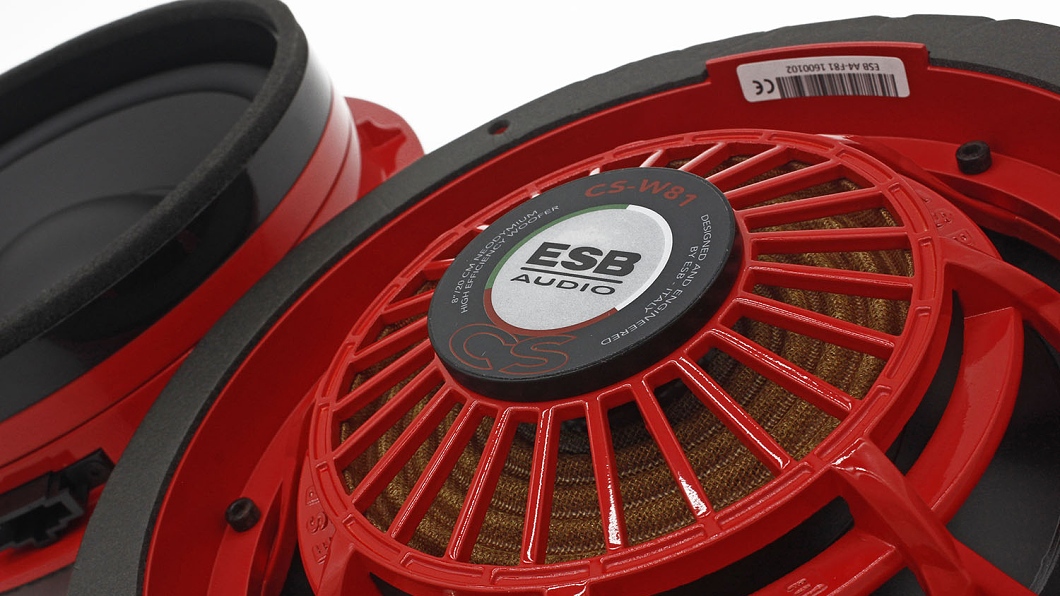
| Catalog number | ESB A4 FRONT 200 |
| Brand | ESB Audio |
| Links | Official web presentation (English) |
